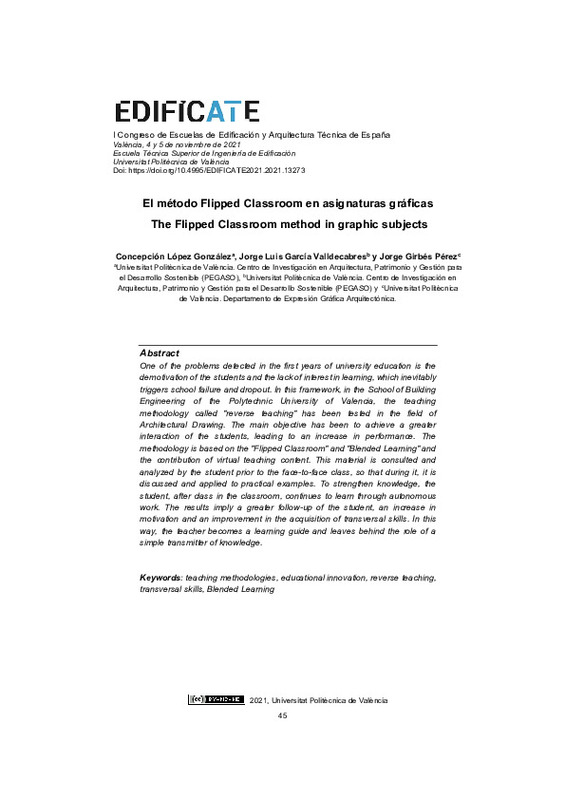JavaScript is disabled for your browser. Some features of this site may not work without it.
Buscar en RiuNet
Listar
Mi cuenta
Estadísticas
Ayuda RiuNet
Admin. UPV
El método Flipped Classroom en asignaturas gráficas
Mostrar el registro completo del ítem
López González, C.; García Valldecabres, JL.; Girbés Pérez, J. (2021). El método Flipped Classroom en asignaturas gráficas. En EDIFICATE. I Congreso de Escuelas de Edificación y Arquitectura Técnica de España. Editorial Universitat Politècnica de València. 45-57. https://doi.org/10.4995/EDIFICATE2021.2021.13273
Por favor, use este identificador para citar o enlazar este ítem: http://hdl.handle.net/10251/183802
Ficheros en el ítem
Metadatos del ítem
| Título: | El método Flipped Classroom en asignaturas gráficas | |
| Otro titulo: |
|
|
| Autor: | ||
| Entidad UPV: |
|
|
| Fecha difusión: |
|
|
| Resumen: |
[EN] One of the problems detected in the first years of university education is the
demotivation of the students and the lack of interest in learning, which inevitably
triggers school failure and dropout. In this framework, ...[+]
[ES] Uno de los problemas detectados en los primeros cursos de la enseñanza universitaria es la desmotivación del alumnado y la falta de interés por el aprendizaje, lo que irremediablemente desencadena el fracaso escolar ...[+]
|
|
| Palabras clave: |
|
|
| Derechos de uso: | Reconocimiento - No comercial - Sin obra derivada (by-nc-nd) | |
| ISBN: |
|
|
| Fuente: |
|
|
| DOI: |
|
|
| Editorial: |
|
|
| Versión del editor: | http://ocs.editorial.upv.es/index.php/EDIFICATe/EDIFICATe2021/paper/view/13273 | |
| Título del congreso: |
|
|
| Lugar del congreso: |
|
|
| Fecha congreso: |
|
|
| Tipo: |
|









